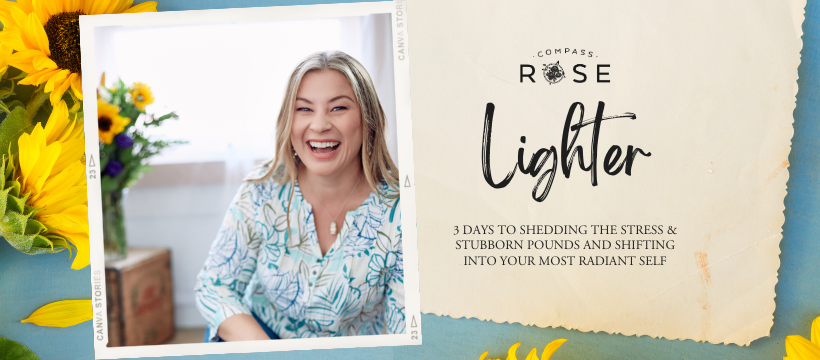Stress does not always look the same. Sometimes it shows up as acute stress, the big and obvious kind that launches you straight into fight or flight, like a looming deadline, an argument, or a sudden crisis. Other times it shows up as chronic stress, the quieter version that builds slowly through the daily grind. Things like overscheduling, skipping meals, or constant notifications may not feel serious in the moment, but over time they add up and keep your body running in overdrive.
Both acute stress and chronic stress affect your nervous system. Acute stress pushes your body into survival mode temporarily, while chronic stress keeps you stuck there longer than it should. That is when digestion, sleep, energy, and even your immune system begin to suffer. The tricky part is that chronic stress often blends into your normal, making it hard to notice until your health starts sending signals.
Understanding this difference is the first step. Once you see how stress shows up, both in dramatic moments and in quieter daily habits, you can begin to guide your body back into balance.
Signs You’re Stuck in Fight-or-Flight
Imagine your body as a well-tuned orchestra. Each system, including digestion, sleep, energy, and immune function, is an instrument working in harmony to keep you healthy. But when you are stuck in fight-or-flight mode, it feels like the conductor is offbeat, the strings are out of tune, and the whole performance is chaotic.
Fight-or-flight is your body’s natural stress response. It is there to protect you by flooding your system with adrenaline and cortisol so you can react quickly to danger. But what happens when that state becomes your default? When the stressors of daily life, like emails, deadlines, notifications, and worries, keep your body in a constant state of alert?
Living in fight-or-flight mode does not just feel exhausting. It takes a toll on your health. Your digestion slows, your immune system weakens, and your body struggles to repair itself. The good news is you can shift out of it. Your body has another mode, rest-and-digest, that is designed to restore balance, calm, and healing. The key is learning how to activate it intentionally.
Most of us do not recognize the signs of chronic stress because it can feel like our normal. But your body sends signals when it is stuck in overdrive.
You are unable to truly relax even when you are exhausted.
Your digestion feels off, including bloating, irregularity, or a constant “butterflies in the stomach” feeling.
Sleep is elusive, with your mind racing as soon as your head hits the pillow.
You notice tension in your body, like tight shoulders, a clenched jaw, or shallow breathing.
You are quick to irritability or feel overwhelmed by small things.
These are not just signs of a busy life. They are your body’s way of saying it has been running on stress hormones for too long.
Everyday Habits That Add to Chronic Stress
Sometimes stress is loud and obvious. Other times it creeps in through daily habits that feel normal. These subtle stressors slowly build chronic stress without you noticing. Mindless over-scheduling, constant notifications, rushed meals, poor posture, too little sleep, and even background noise can all quietly keep your nervous system on alert.
Mindless over-scheduling keeps your calendar full and your body in constant alert.
Digital noise and notifications pull your attention repeatedly, making it hard to relax.
Skipping meals or eating in a rush triggers blood sugar spikes and keeps your body in survival mode.
Poor posture compresses your chest, makes breathing shallow, and signals stress to your brain.
Running on too little sleep limits your body’s ability to repair and process stress.
Constant background noise, including traffic, appliances, or the hum of a TV, prevents your nervous system from fully relaxing.
Ignoring your breath reinforces tension and keeps your body in a low-grade state of alert.
Recognizing these subtle triggers is just as important as noticing the big, obvious stressors. Once you understand how both acute and chronic stress affect your body, you can start guiding it back into rest-and-digest, the state where healing and balance happen.
Shed the Stress and Stubborn Pounds
Feeling drained or overwhelmed? Join me for my Lighter program. This 3-part on-demand training shows you how to reduce stress, boost energy, and build habits that support balance, without waiting for the “perfect time.”
Understanding Rest-and-Digest
Rest-and-digest is the counterbalance to fight-or-flight. It is controlled by your parasympathetic nervous system. It calms your body, supports digestion, and helps repair cells. Think of it as the reset button your body needs to recover.
Many of the subtle, everyday habits we just discussed keep your nervous system in overdrive. The good news is that intentional practices can shift your body back into rest-and-digest. Here’s how to start:
Breathe with Intention
Your breath is one of the fastest ways to communicate with your nervous system. When you are stressed, your breathing becomes shallow and rapid, signaling your body to stay alert. Deep, intentional breaths can reverse that signal.
If you haven’t tried breathing exercises before, it doesn’t have to be anything fancy or difficult. Inhale deeply through your nose for a count of four, letting your belly expand. Hold for a count of four, then exhale slowly through your mouth for a count of six. Repeat for a few minutes whenever you feel overwhelmed.
Create Rituals of Calm
Your body thrives on routine, and small rituals can help signal it is time to shift gears. This might be a cup of herbal tea in the evening, a warm bath, or a few minutes of gentle stretching before bed. The key is consistency. These rituals teach your body when it is safe to relax.
Nourish Your Body
Chronic stress often disrupts digestion, so focusing on gut-supportive foods can help your body recover. Think warm, easily digestible meals like soups, stews, or roasted vegetables. Incorporate foods rich in magnesium, such as leafy greens, nuts, and seeds, to support relaxation.
Tune into Your Body
We spend so much time in our heads, replaying worries and planning to-do lists, that we disconnect from what is happening in our bodies. Practices like yoga, tai chi, or even a simple body scan meditation can help you reconnect. Pay attention to where you are holding tension and consciously release it.
Set Boundaries with Stressors
Not all stress is avoidable, but how you respond to it matters. Evaluate what is truly essential and where you can say “no.” Setting boundaries is not about being selfish. It is about protecting your capacity to show up fully for what matters most.
Spend Time in Nature
Nature has a way of grounding us, pulling us out of our racing minds and into the present moment. Even a short walk outside can help reset your nervous system, especially if you leave your phone behind and focus on the sights, sounds, and smells around you.
Building Rest-and-Digest Into Your Day
Shifting into rest-and-digest is not about overhauling your life overnight. It is about creating small moments of calm throughout your day.
Maybe it is pausing for three deep breaths before responding to an email or taking five minutes to sit in silence after lunch, letting your body focus on digestion. Over time, these practices add up, teaching your nervous system that it is safe to let go of constant vigilance.
Small Changes, Big Impact
Living in fight-or-flight mode might feel like it is helping you get through the day, but it is not sustainable. Over time, it drains your energy, disrupts your health, and makes it harder to truly enjoy life.
Silent stressors often blend into daily routines, making it easy to overlook how they impact your well-being. The good news is that even small, consistent changes can make a big difference. You do not need to tackle everything at once. Start with one habit, such as focusing on your posture, taking intentional breaths, or setting a phone-free hour each day.
Give yourself grace as you experiment with what works for you. The goal is not perfection; it is progress toward a life where you feel more at ease in your body and mind. When you make space for rest-and-digest, you are giving your body the tools it needs to heal, recharge, and show up fully.
Sometimes, healing begins simply by noticing the little things.
Are you ready to shed the stress and stubborn pounds that often comes along with it?
If you’ve been feeling overwhelmed, low on energy, or stuck in a rut - this is for you! In my 3-part on-demand training, you’ll learn how to reduce stress, nourish your body, and build simple habits that support lasting energy and balance.
Start today for just $27 and get instant access to all 3 sessions plus bonus resources to help you reset and feel your best.




